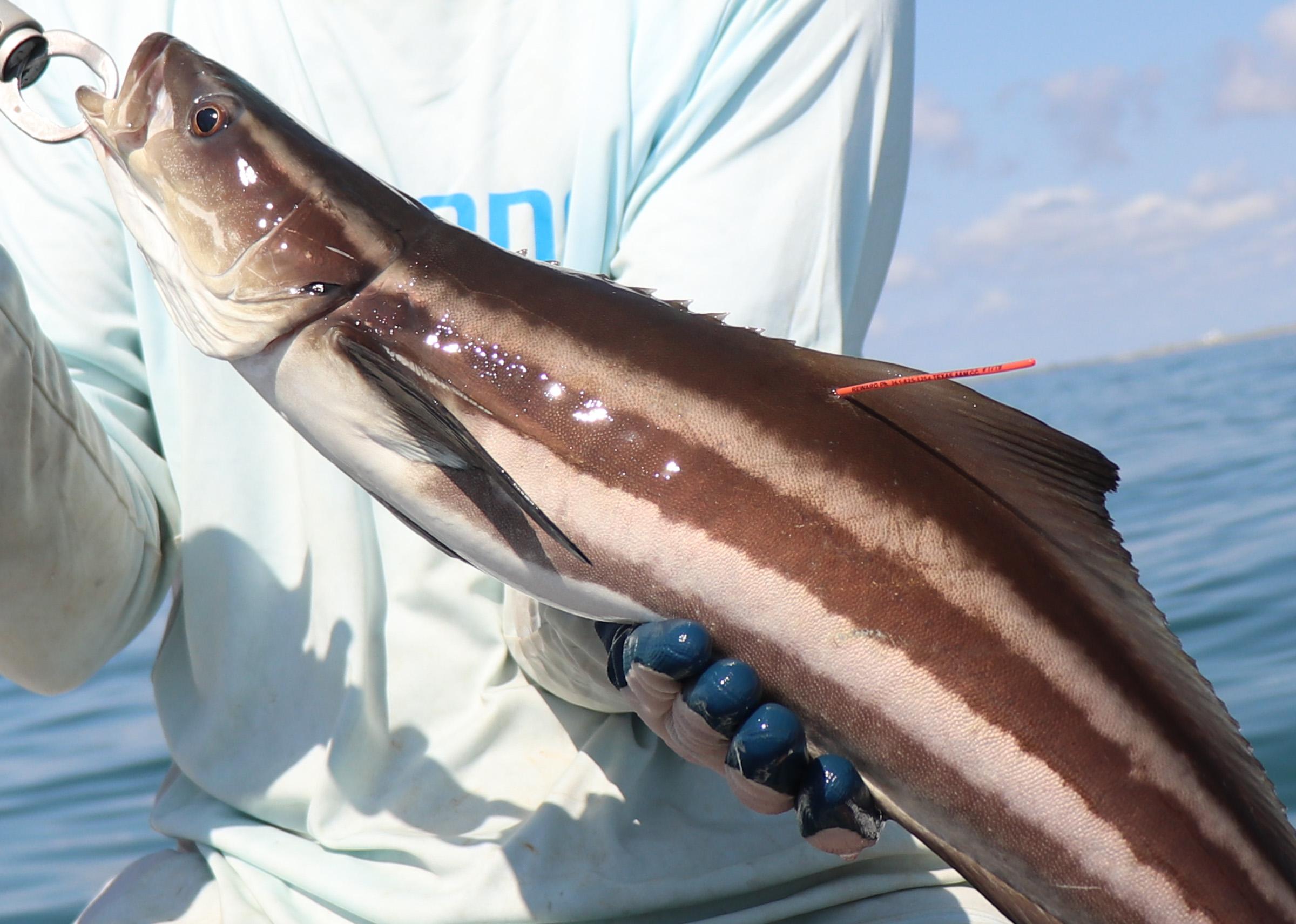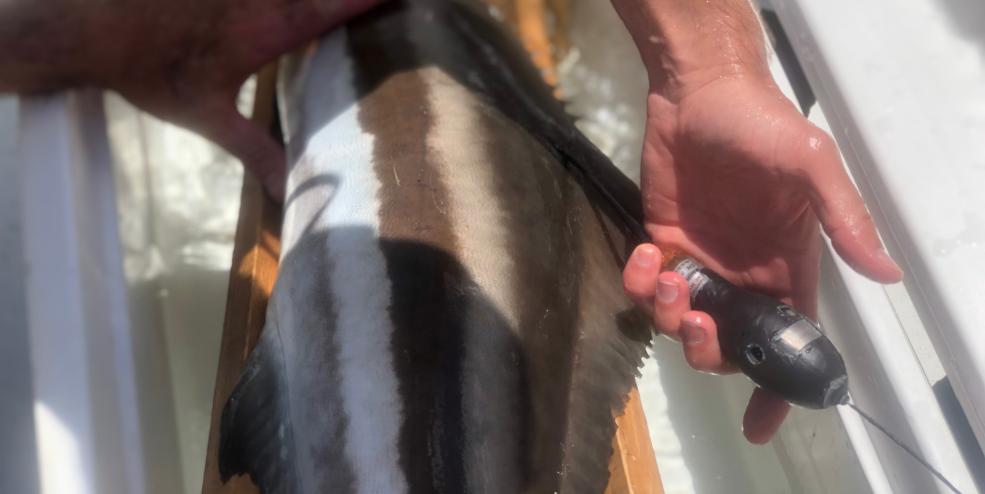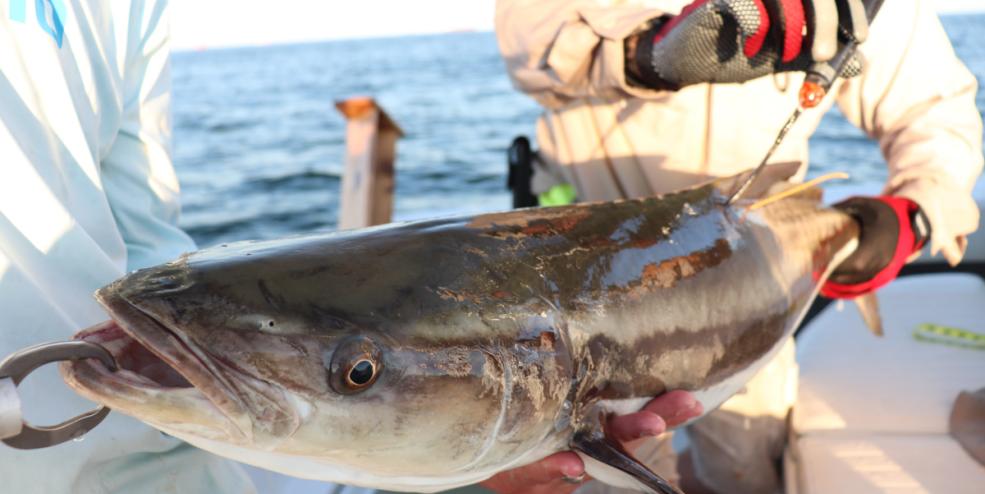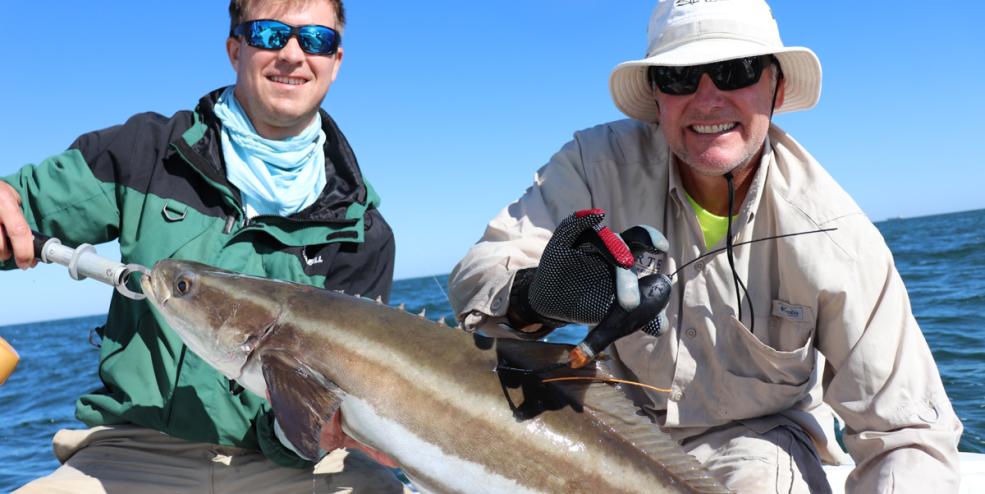Cobia Movement Patterns

About this Project
Cobia (Rachycentron canadum) is a coastal migratory pelagic species managed jointly by the Gulf of Mexico Fishery Management Council (GMFMC) and the Atlantic States Marine Fisheries Commission (ASMFC; authority delegated by the South Atlantic Fishery Management Council). Cobia support a popular recreational fishery (>90% of landings) but are also captured in commercial fisheries and as bycatch in shrimp fisheries along the U. S. Atlantic coast and throughout the Gulf of Mexico. Despite the species popularity as a sportfish, few stock assessments have been conducted. The most recent assessment for cobia in the Gulf migratory group was conducted in 2012 (SEDAR 28). Although this assessment did not suggest overfished status or that overfishing was occurring, confidence in the assessment was low, and management advice was greatly hindered by severe data gaps. In particular, deficiencies regarding stock structure, life history, movement patterns, and post-release survival contributed toward high uncertainty in the assessment. For example, the southern boundary of the Gulf stock, particularly with respect to Mexican and Texas waters, is unknown. Currently, no studies of mixing exist in the western Gulf. This has significant implications for management, especially if the degree of mixing between the U.S. Gulf and Mexican waters is high. Thus, there remains a substantial need to better understand the stock structure and how seasonal movements may influence the distribution of fishing effort and mortality, which is critical to inform future management.
Research Objectives
- Examine seasonal movement patterns of Cobia and evaluate the degree of mixing between sub-regions in the Gulf of Mexico;
- Estimate discard mortality for Cobia captured in the U.S. recreational hook-and-line fishery;
- Examine fine-scale coastal movement, site fidelity, and habitat use patterns of Cobia along the Texas Coast.
To meet these objectives, we are tagging Cobia with pop-up satellite archival transmitting tags (PSATs) to examine movement patterns and provide insight into the degree of connectivity between sub-regions of the Gulf including Mexican waters. Additionally, by also fitting animals with acoustic transmitters and tracking them with an array of acoustic receivers, we can better define both fine- and broad-scale movement patterns along the Texas coast and beyond. To engage recreational anglers, we also provide cooperating anglers with dart tags to continue our citizen scientist sportfish tagging initiative and increase the likelihood of additional connectivity and movement data. Because sub-regional stock structure of Cobia in the Gulf is largely unknown, this project will provide much improved data for use in upcoming stock assessments and allow managers to better predict how the stock will respond to new regulations, reduce uncertainty, and make more informed future management decisions.
A cobia with a PSAT attached just below the dorsal fin.

A pop-up satellite archival tag (PSAT) used to estimate the movements and habitat use of a cobia.
Releasing a satellite-tagged cobia off Port Aransas, Texas.

